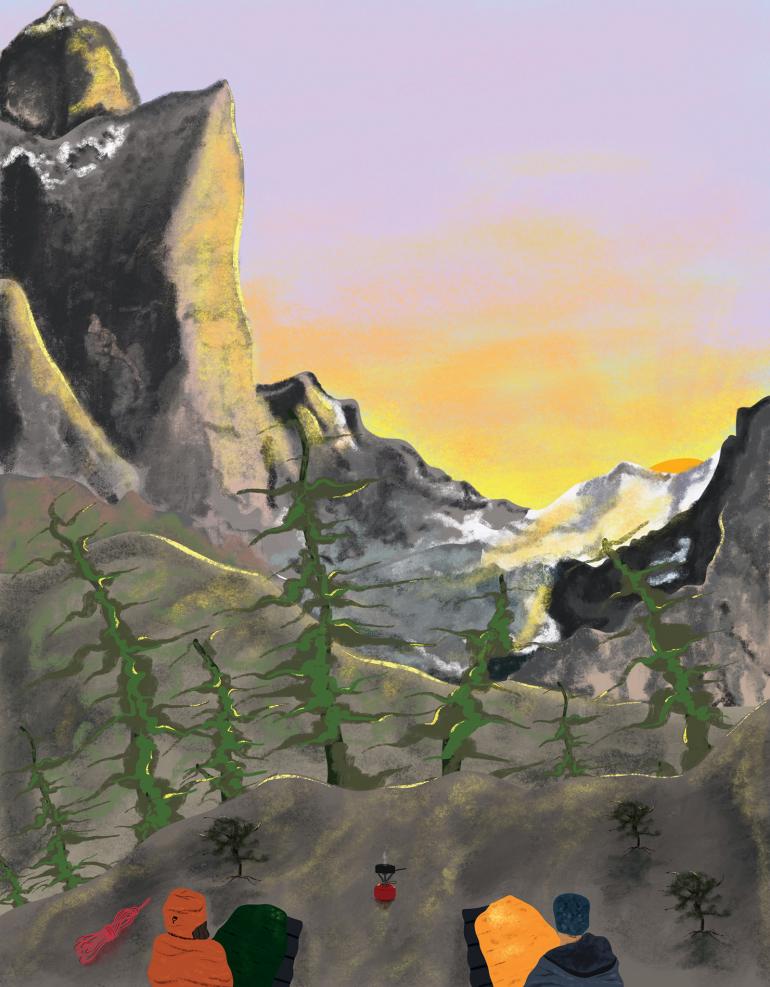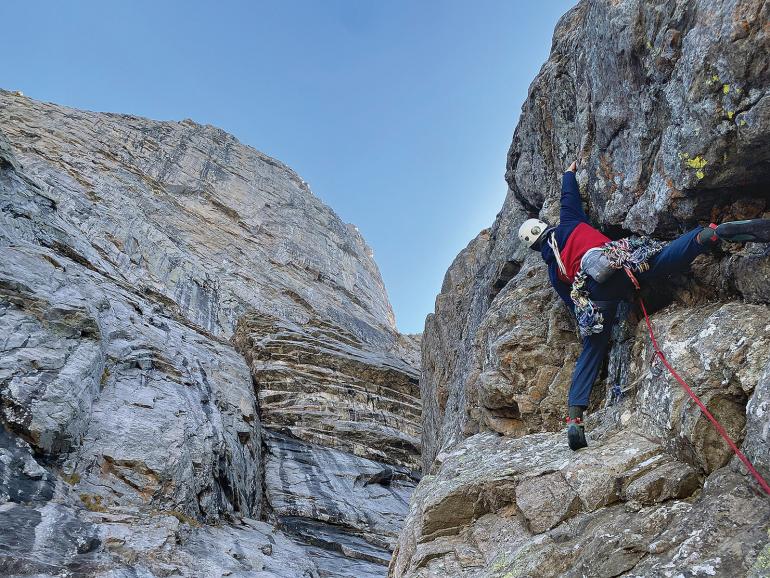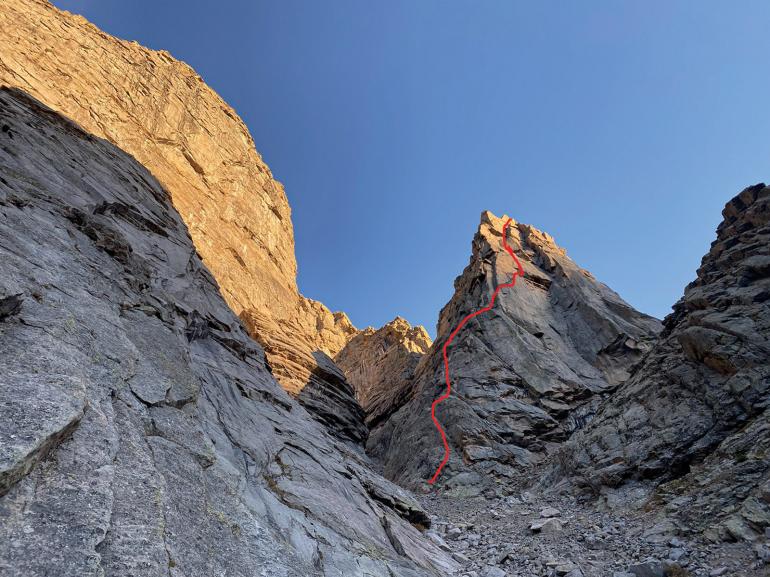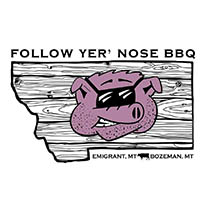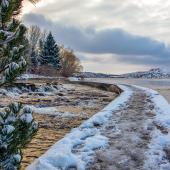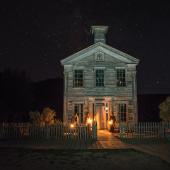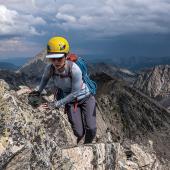The REM Cycle
High in the Beartooths, two sleepy climbers make the most of a late start.
On a crisp October evening, Nathaniel and I set off into the Beartooths. We had met only a year prior, while climbing with a mutual friend. We immediately clicked and have since had a lot of great climbing days together. On this occasion, our plan was to ascend the Abbey-Shock, a long 5.11 route up the 1,800-foot west face of the Upper Doublet. With a late departure from Bozeman, we hiked in the dark from the East Rosebud Trailhead. After the initial 3.5 miles along the well-trodden Beaten Path, it was time to peel off from the trail and steer toward the Doublets. We briefly entertained sleeping right at the fork from the Beaten Path, but decided to press on for another hour to cover more ground before finally hunkering down for the night.
We decided that checking it out would be more fun than hiking back to the car and driving home, so we ditched our bivy gear and set off toward the face with the mantra, “Go until we aren’t having fun anymore.”
It was immediately clear we were not on any sort of trail, but we figured as long as we were going uphill, we’d be sparing ourselves some work the next day. We spent the night in a very steep drainage somewhere below the Lower Doublet, with plans to wake up early the next day and climb. However, we both managed to sleep through our alarms set for 4:20, and didn’t mobilize until 8:30. At this point, ambition for climbing the Abbey-Shock was waning precipitously. As we sat in our sleeping bags watching the first rays of morning light hit the rock faces across the valley below us, we decided to at least find the correct approach to the Doublets. We’d gone too low in the drainage the night before, and spent a couple hours soloing several hundred feet of loose slabs to regain the standard approach.
As we neared the base of the Lower Doublet, several more formations and features came into view—most notably, a 500-foot-tall spire with several corner systems on its northwest face. We decided that checking it out would be more fun than hiking back to the car and driving home, so we ditched our bivy gear and set off toward the face with the mantra, “Go until we aren’t having fun anymore.”
(Later, talking with longtime Beartooth climber Justin Willis, we learned that this formation is called the Throne and has only one documented route: a four-pitch 5.10 climbed by longtime Montana climber Chad Chadwick, back in the day. That route goes up the most prominent of the corner systems on the northwest face.)
We contoured below the Upper Doublet to ascend a gully between it and the Throne, which brought us to the base of the latter, on the left side of the northwest face’s main corner systems. These corners, which we’d spotted from below, were guarded at the base by a 20-foot band of loose rock; so our plan was to climb up the gully on the left and traverse to the corners from above the rock band.
Nathaniel led the first pitch, which consisted of some intricate 5.8+ climbing for a full rope length, and ended on a broad arete that wasn’t very comfortable to belay from. Pitch two was short—I traversed up and right past a thin seam, eventually pulling a couple of 5.10 moves to gain a sloping ledge just under halfway up the face. On the third pitch, while figuring out a difficult sequence from one crack to another via bouldery face climbing, I took two 20-foot falls onto a fingertip-sized cam—in marginal rock, no less. Third time was the charm, though: I stuck the move and gained access to a roughly 100-foot-long finger crack that proved to be the crux of the route. Mentally and emotionally drained, I resorted to pulling on small cams for a brief section near the top. I built a belay on a sloping ledge at the base of a splitter hand crack. While following, Nathaniel climbed the pitch without falling and suggested a grade of 5.11. He then led us to the top of the formation in two more pitches, consisting of the hand crack into a traverse to avoid a false summit, and finally a dirty but fun 5.9 chimney to the true summit.
We dubbed the route REM Cycle—named after our leisurely start to the morning. We descended the aforementioned gully back to our packs and hiked out that evening, very content with how we’d salvaged our day. At some point, I hope to complete the Abbey-Shock on the Upper Doublet; however, days like this remind me that adventure and fulfillment in the mountains are often the result of unforeseen circumstances.

